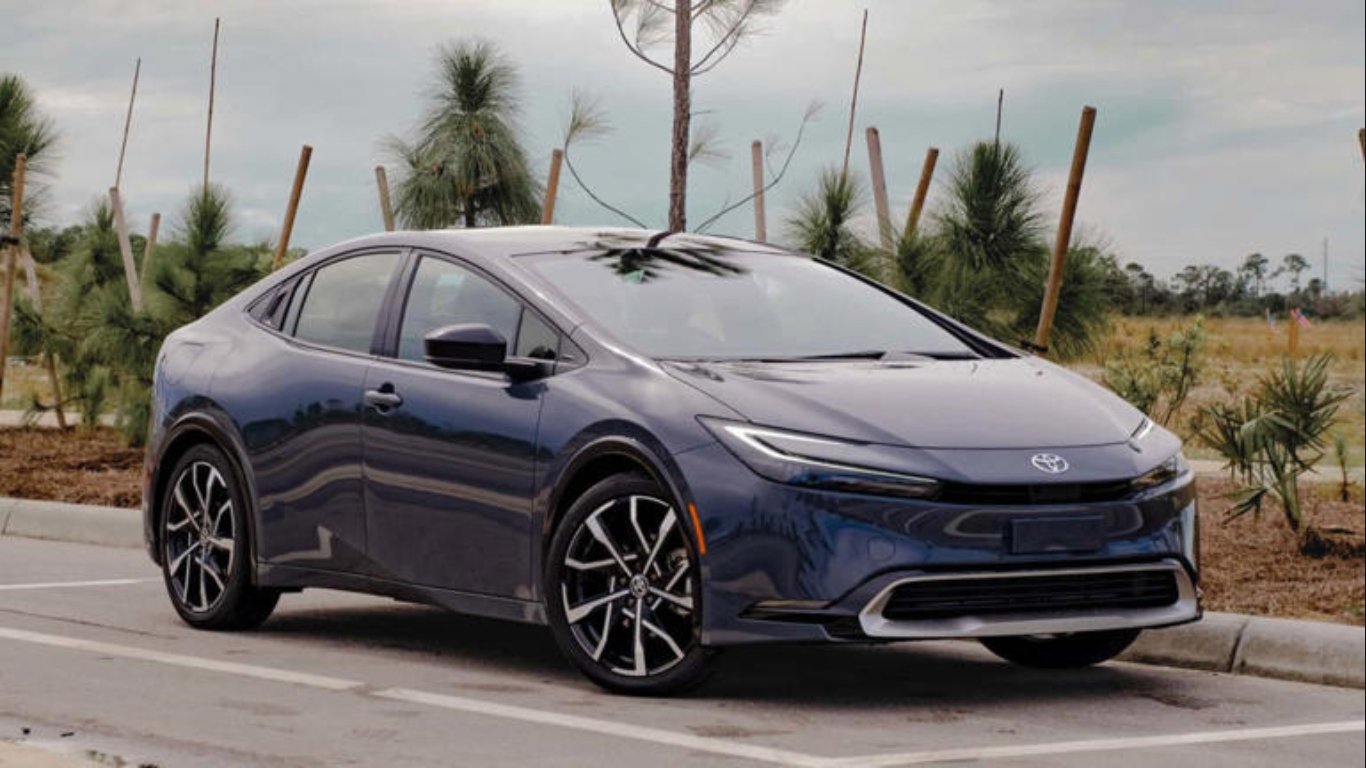Imagine driving a car so sleek that your friends mistake it for something exotic, yet it’s simply the latest Toyota Prius, boasting one of Toyota’s finest designs to date.
The Prius flaunts a striking appearance with a seamless line connecting its front fascia and bumper, lending it a sophisticated profile reminiscent of a computer mouse. Its distinctive hook-like headlights at the front and a slim light bar at the rear further accentuate its allure. Opt for the Prius with a black roof, and you’ll notice the front windshield and rear window angle so sharply that they seem to merge into a single, uninterrupted piece.
Despite its eye-catching design, the Prius maintains exceptional aerodynamic efficiency with a drag coefficient of 0.27 cD, although technically not as impressive as its predecessor’s 0.24 cD. Nevertheless, it remains at the top tier of aerodynamic performance. In terms of fuel efficiency, the Prius Prime offers a combined fuel economy rating of 127 miles per gallon equivalent (mpge), with up to 44 miles of electric range on the base SE model. The higher-tier XSE and XSE Premium variants provide 39 miles of electric range, allowing for a total driving distance of 600 miles before needing to refuel.
However, the Prius’s sleek design comes with its share of compromises. The windshield’s steep angle limits visibility, akin to that of a Camaro. Additionally, the A-pillar obstructs a significant portion of side visibility, and the steering wheel adjustability is somewhat limited, making it challenging for some to find a comfortable driving position. Moreover, the cabin lacks insulation from external noise, particularly wind and tire noise in electric vehicle (EV) mode, along with engine whining under heavy acceleration.
Under the hood, the Prius Prime houses a 2.0-liter four-cylinder gasoline engine paired with a 13.6-kilowatt-hour lithium-ion battery pack and two electric motors. This new battery pack, 55% larger than its predecessor, combined with the engine, delivers an impressive output of 220 horsepower and 139 pound-feet of torque, significantly surpassing the previous Prius Prime.
Charging the Prius Prime takes approximately 11 hours with a standard home outlet, or four hours with a Level 2, 240-volt outlet, as it does not support DC fast charging. Despite its eco-friendly credentials, the Prius Prime boasts impressive acceleration, reaching 60 miles per hour in just 6.4 seconds, thanks to the immediate torque from its electric motors. Additionally, it maintains ample power for overtaking at highway speeds, with the capability to operate in EV mode at speeds of up to 84 mph.
On the road, the Prius offers light and responsive steering, particularly in Sport mode, with predictable braking and confident cornering, thanks to its well-tuned suspension. However, the sporty suspension setup may feel stiff on uneven roads, although it remains tolerable.
Inside, the cabin exudes elegance, with premium materials adorning surfaces, including SofTex faux leather upholstery and heated, ventilated seats. The XSE Premium variant features a larger 12.3-inch touchscreen, enhancing the driving experience further.
With prices starting at $34,495 for the base SE model, the Prius Prime offers excellent value for its features and performance. Even the fully equipped XSE Premium, priced at $40,765, remains competitive, making it a compelling choice in its segment.
In conclusion, the Toyota Prius Prime combines stunning design, exceptional efficiency, and impressive performance, reaffirming Toyota’s prowess in hybrid technology. Its overall package makes it a strong contender in the market, challenging even the most modern electric vehicles available.

